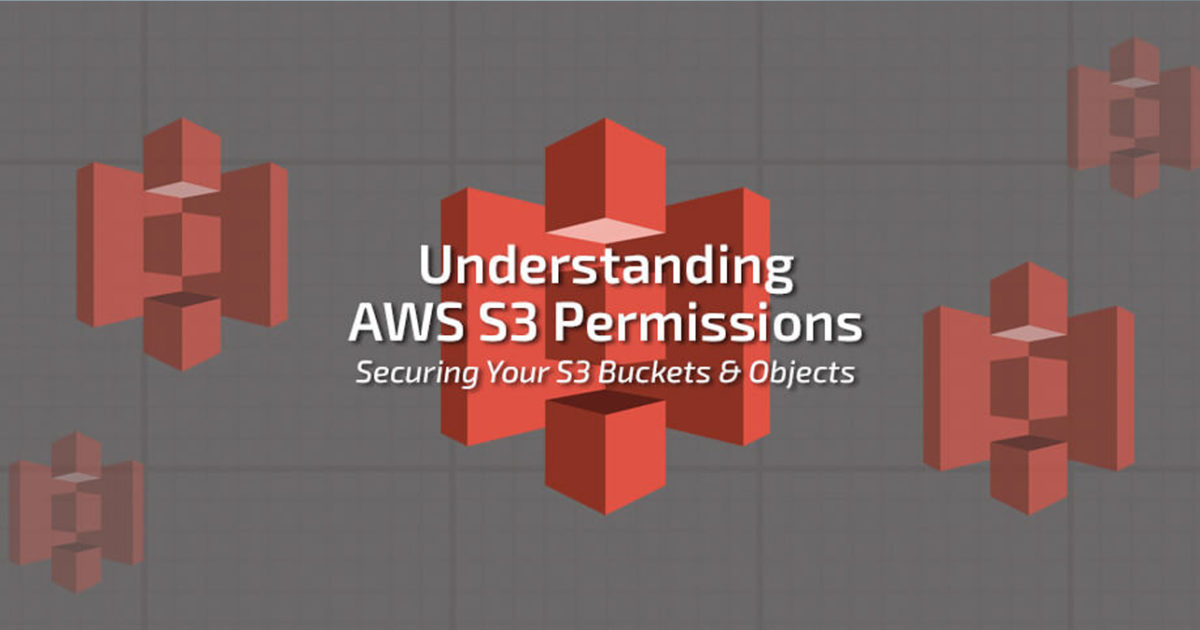

- #Permissions for a s3 image bucket how to
- #Permissions for a s3 image bucket manual
- #Permissions for a s3 image bucket full
- #Permissions for a s3 image bucket code
Navigate to S3įrom the AWS console homepage, search for S3 in the services search bar, and click on the S3 service in the search results. This allows developers to quickly identify, provision, or roll back iterations of the solution.Ĭreate an S3 bucket with encryption and server access logging enabled. Version control system: To take advantage of IaC, resource files should be synced to a version control solution, such as git.Regulatory requirements: Business and regulatory requirements may drive configuration decisions, but regardless of requirements, it's generally a good idea to enable bucket encryption and bucket-logging anyway.Depending on how long data needs to be accessible, build life cycle rules to delete old objects or move objects between storage classes at fixed intervals. For example, it's common practice to create subfolders per time period (year, month, day, etc.).
#Permissions for a s3 image bucket how to
Future-proofing: If you think future analysis and reporting on a bucket is a possibility, think about how to best organize the bucket structure.Alternatively, you can allow CloudFormation to generate random unique identifiers instead of specifying names. To avoid running into this problem, plan your names well and try to namespace them using the environment or account ID. This also makes it unlikely that short, simple names will be available. Unique names: S3 bucket names must be globally unique, making it impossible to create buckets with the same name across different accounts.CloudFormation permissions: Does the user have permissions to create, update, and delete CloudFormation stacks? How about permissions to provision the resources listed in the CloudFormation template?.S3 bucket creation prerequisitesīefore proceeding with bucket creation, there are a number of things to consider: The AWS::S3::Bucket resource is used to build an Amazon S3 bucket. This includes - but is not limited to - enabling encryption and bucket access logging. Within the definition, a number of keys are used to define specific bucket attributes. S3 buckets with AWS CloudFormationĬloudFormation is used to create and configure AWS resources by defining those resources in a given IaC. CloudFormation is the solution to this problem. Although a developer may manage to create and configure a single bucket successfully, the probability that they can replicate this process perfectly across multiple accounts and environments is quite low. The most common problem we’ve seen is accurate replication.
#Permissions for a s3 image bucket manual
However, these manual tasks require many specific, individual steps that can complicate the process.

Overview: AWS S3 bucket creationĬreating a bucket may seem like a simple enough task the intuitive user interface makes things like configuring access control and bucket access logs, enabling encryption, and adding tags an easy process. In its simplest terms, CloudFormation allows you to create and manage your infrastructure or AWS resources across accounts and regions - all via code. What is AWS CloudFormation?ĬloudFormation - Amazon’s IaC service - provides an easy way to create a collection of AWS and third-party resources in a manner much simpler than the traditional specific resource APIs. The wide variety of customizations in relation to cost, security, scalability, and durability allow users to fine-tune their architecture to meet business and compliance requirements. What is AWS S3?ĪWS S3 is a highly-customizable, secure object storage solution.
#Permissions for a s3 image bucket code
This article will walk you through how to create S3 buckets via CloudFormation, allowing you to reap the benefits of Infrastructure as Code (IaC) practices. AWS continues to improve and simplify the bucket creation and configuration process, from simply clicking “Create bucket” in the user interface to enabling creation and configuration through code, via CloudFormation. You'll need to change the BUCKET_NAME variable to the name of your bucket.Amazon Web Services (AWS) Simple Storage Service (S3) enables users to organize and manage data in logical containers known as “buckets”. Here's an example JSON IAM policy that works.
#Permissions for a s3 image bucket full
While the simplest way to get Retool working with S3 is to give Retool full S3 access, the best practice is to restrict access to buckets on an as-needed basis. Success! Keep your Access key and Secret access key-you'll need them in Retool's S3 resource setup page. Hit "next" to review your user details and permissions summary. You'll need to create a new policy, then attach the policy to the new user. The easiest is granting it full S3 permissions, but if you want, you can further restrict the permissions. Hit "next" to grant the account permissions. Head over to IAM, make a new user, and call it retool-s3-uploader.


 0 kommentar(er)
0 kommentar(er)
